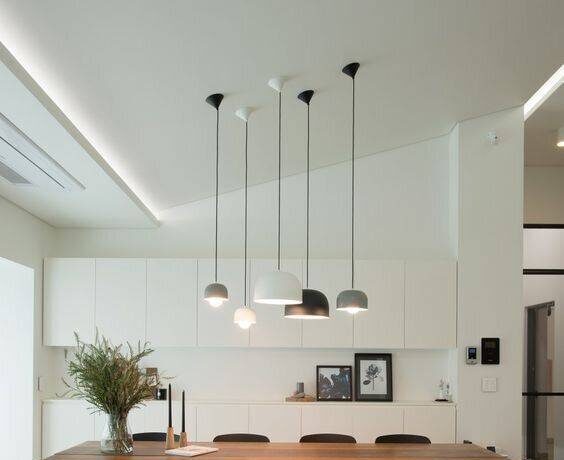Lighting has a significant influence on how people see and comprehend architecture. It allows people to perceive and admire the buildings’ beauty, whether the light comes from natural or artificial sources. Architectural lighting design aims to harmonize the qualities of light inside the space to improve the visual, technical, and, more recently, non-visual aspects of ergonomics in terms of building or space illumination.
Without lighting, architecture would most likely lack the same effect. Natural or artificial light draws attention to textures, colors, and spatial shapes, contributing to the further development of architectural qualities. Lighting affects how we see buildings, and lighting amplifies our vision even further.
The Elements of an Architectural Lighting Design
When establishing a good harmony between lighting and architecture, it is necessary to understand three primary components of architectural lighting: aesthetics, function, and efficiency. Engineers and architects focus more on the emotional influence that lighting and architecture will have on occupants. It’s where designers determine how they want people to feel as they go into an establishment.
One cannot deny the significance of the second feature. While some want the lighting to appear a certain way, some want to achieve its primary aim of increasing visibility. Lighting spaces is a must to let occupants feel comfortable when exploring an entire complex.
They should be able to view the ground and surrounding walls, which will create a feeling of protection. The ultimate result is crucial in today’s world of green construction and sustainability initiatives. It’s one thing to create a beautiful lighting scheme; it’s another to make an attractive scheme that is also very energy efficient.
One can do it by ensuring that most light reaches its intended destination while wasting as little as possible. The building will be more efficient if there is no wasted lighting. When compared to traditional light sources, LEDs are more ecologically friendly.
Due to technical breakthroughs, LEDs have evolved, gradually improving their brightness to power consumption ratio. Furthermore, a reduction in energy consumption results in lower operational costs. Additionally, using exterior access doors and panels may further add safety features by providing safe and convenient access points to critical utility areas when needed.
Building Categories
Sports arenas, libraries, hospitals, and other public structures make up the first category. These structures are more focused on supplying the appropriate quantity of light for various jobs and occasions.
It’s also crucial for the audience to move from one area to their seats and navigate the arena/stadium. Libraries and hospitals operate on the same principle. In libraries, inhabitants require enough light levels to read, write, and locate volumes on shelves, but hospitals need high light levels for physicians and nurses to accomplish their work effectively.
The second category consists primarily of office buildings and warehouses. The efficiency of lighting is their primary priority. They can’t afford to spend a boatload on lights and the power it requires because of the high energy consumption of such buildings. With eco-friendly construction on the rise, having energy-efficient and sustainable lighting is critical.
Museums, theaters, casinos, and other specialist buildings comprise the third and final group (specialized structures). These structures rely significantly on their surroundings and the experiences they can offer. They’re interested in making architectural spaces and elements seem better.
People expect an experience when they go to a theater to see a play or a musical before the event even starts. They want a stunning chandelier to greet guests at the entrance, opulent wall sconces to illuminate the corridor leading to their seats, and light surrounding the stage to highlight sculptures, pillars, and other architectural aspects.
An Architectural Lighting Designer
Architectural Lighting Design: This is a distinct field alongside landscape architecture, interior design, architecture, and electrical engineering. Richard Kelly, who founded his firm in 1935, was one of the first proponents of architectural lighting design.
Kelly presented his approach to architectural lighting, which is still used today, at a joint meeting of The American Institute of Architects, the Illuminating Engineering Society of North America, and the American Society of Industrial Designers (now the Industrial Designers Society of America) in Cleveland in 1952.
Process: In terms of essential project stages, architectural lighting design often follows the architect’s plan of works: feasibility, design, specification, construction documentation, site supervision, and commissioning, to name a few.
Education: Several universities and technical schools now offer degree programs in architectural lighting design. While many architectural lighting designers have a background in electrical engineering, architectural engineering, architecture, or luminaire manufacturing, several universities and technical schools now offer degree programs in architectural lighting design specifically.
The Fixtures
Lighting fixtures are available in a broad range of styles to suit several purposes. The most important goals are to retain the light source, guide the light, and prevent visual glare. Some are simple and useful, while others are works of beauty in and of themselves. You may utilize almost any material, as long as it can withstand high temperatures and complies with safety regulations.
The luminous efficiency, also known as wall-plug efficiency, refers to the quantity of usable light emitted by a light fixture per unit of spent energy, commonly measured in lumens per watt. The efficiency of the installations with interchangeable light sources may alternatively indicate the proportion of light that passes from the “bulb” to the surroundings.
The higher the effectiveness of a lighting fixture, the more transparent it is. Shading the light reduces efficiency while increasing directionality and the likelihood of visual comfort.
An excellent architectural lighting design is both valuable and efficient in addition to being pleasing to the eye. What makes one legendary and genuinely iconic is their ability to show what excellent architectural lighting design a structure can achieve. A building needs a unique architectural lighting design that complements and mixes smoothly with the current plan to accomplish an appealing ambiance and lighting efficiency.







